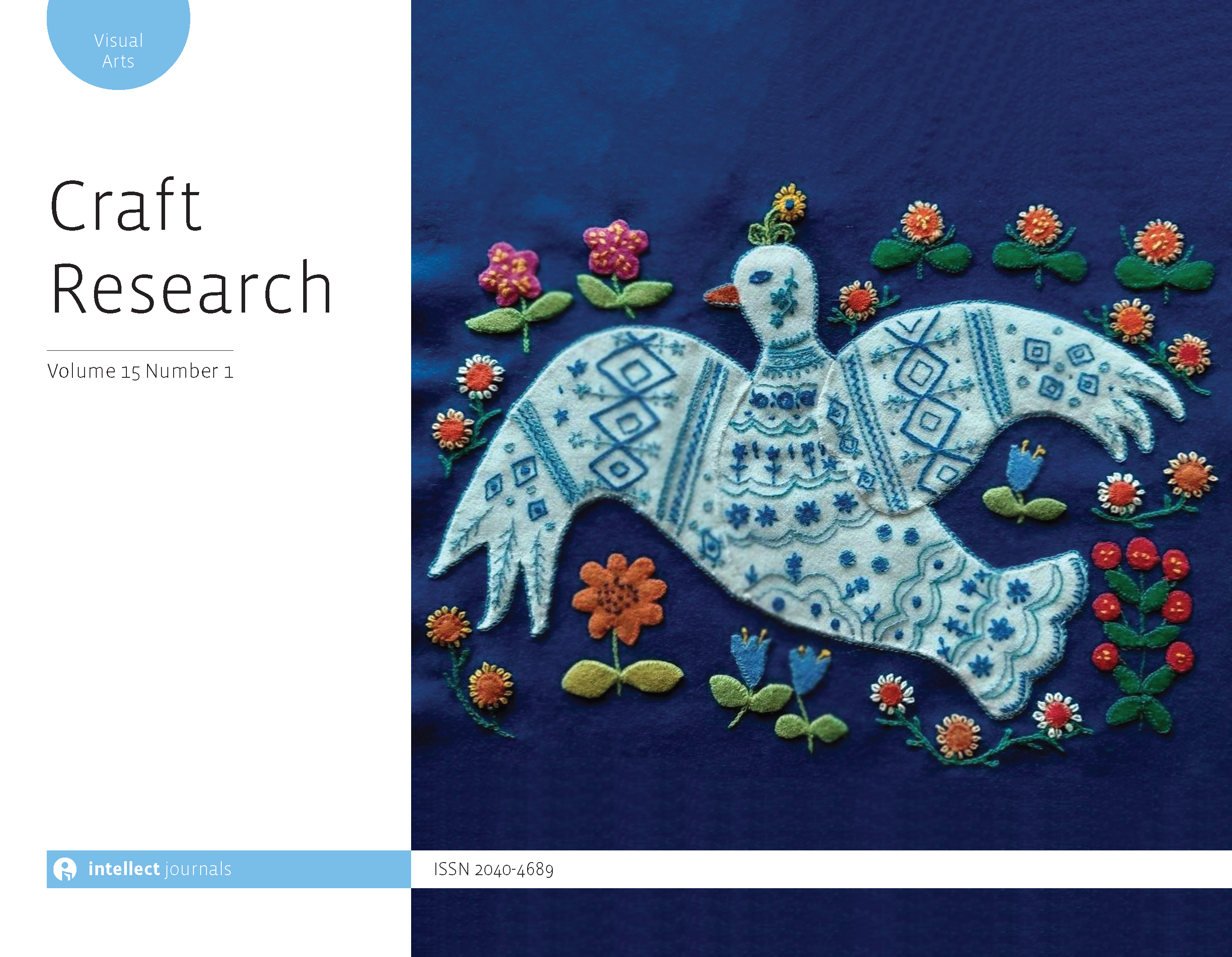
Full text loading...

While it is acknowledged that craftwork has the potential to generate well-being, relatively few empirical studies explore how this happens in practice. Some scholars have used the theoretical concept and phenomenological experience of ‘flow’ to analyse why craft-makers find their work satisfying and engaging. This article builds on such scholarship by empirically demonstrating how ‘flow experiences’ emerge. Drawing on anthropological fieldwork among Lulesámi craft-makers in Northern Norway, the article argues that ‘flow’ should not be taken for granted or seen as a straightforward and easily achieved benefit of craft. Instead, it is a skilful practice that requires learning, collaboration, time and repeated, embodied effort. It involves the transformation of the body through collaborative learning; something that makes ‘flow experiences’ not only learnt but deeply personal and communal at the same time. Through a detailed ethnographic account of how ‘flow’ emerges through the making of the gáppte (characteristic dress), the article provides important insights into contemporary Lulesámi craftsmanship at the same time as it speaks to the wider literature on craft, well-being and learning.

Article metrics loading...

Full text loading...
References


Data & Media loading...

Publication Date:
https://doi.org/10.1386/crre_00067_1 Published content will be available immediately after check-out or when it is released in case of a pre-order. Please make sure to be logged in to see all available purchase options.